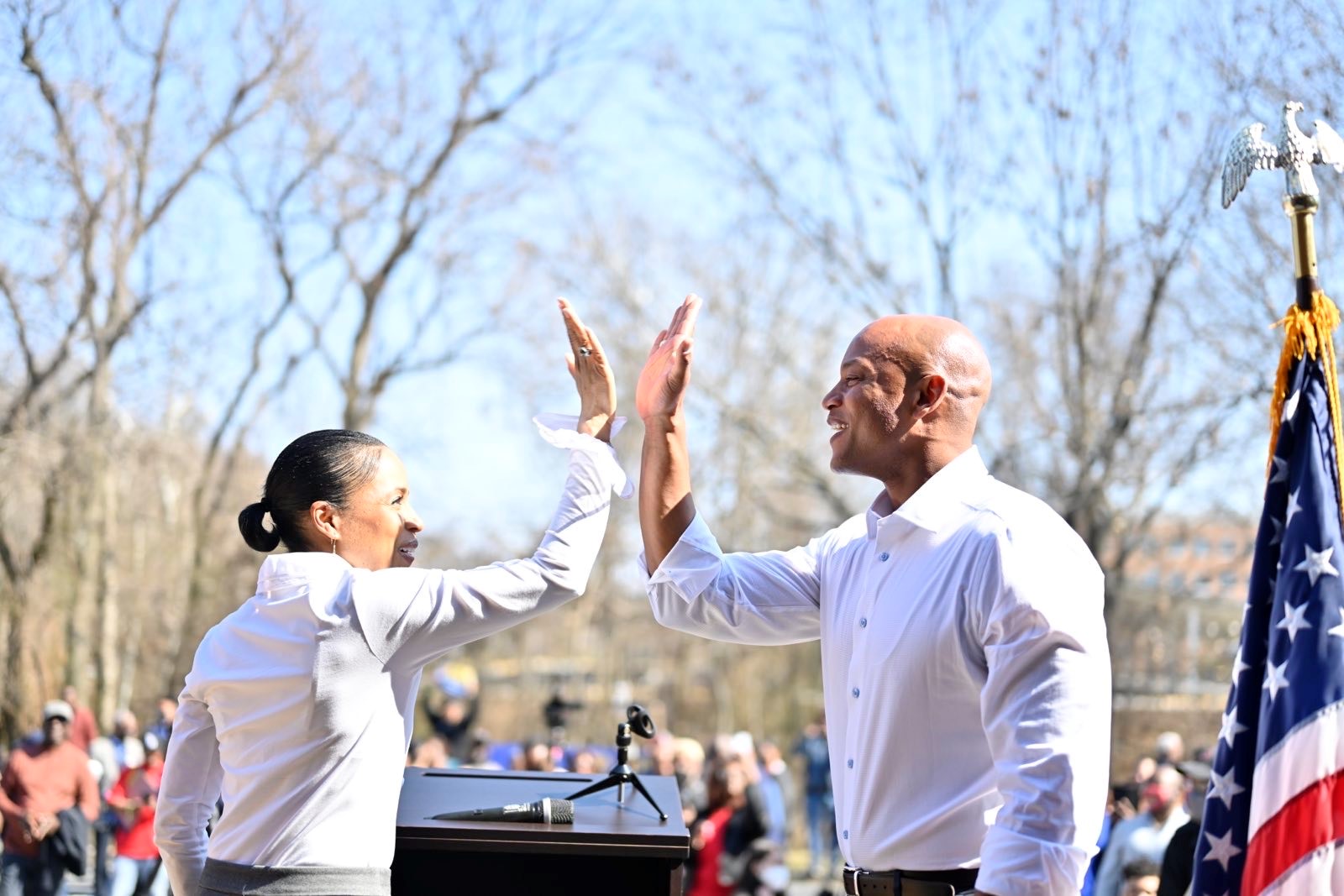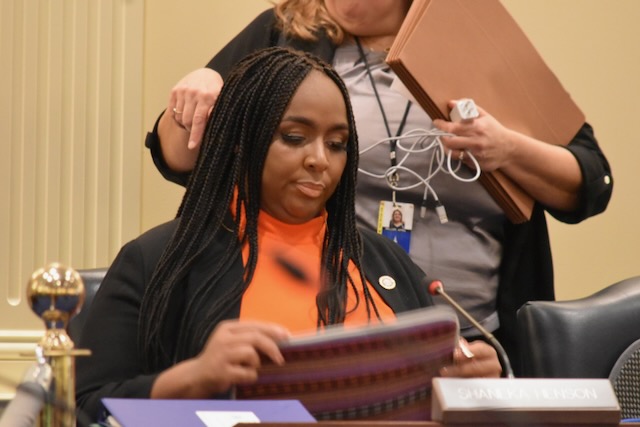Opinion: Building on the ‘Black Agenda’

By Candace Dodson-Reed
The writer is a mom, community advocate, and higher education professional. She is involved in a variety of professional, political and personal efforts that are often intertwined, but stand alone on their merits. She can be reached at [email protected].
Maryland, like every other state in our union, has confronted a stressful, disturbing, and complex mixture of social injustices, divisive elections, and a global pandemic, all of which continues to highlight inequities in health, education, housing, economic opportunity, and more. And as our country mourns and protests the murders of Black people due to senseless police brutality and mistreatment of people of color, we continue to reckon with the undeniable, ongoing, and sometimes obscured truth of systemic racism.
We have seen some significant progress with respect to police reform, corporate commitments, and sweeping legislation focused on racial equity and justice, and yet, it’s time to move into the next phase of action. I read, with great interest, the commentary that Tom Coale offered in his Maryland Matters piece, “Maryland Needs A Housing Governor,” and I’d like to build on it.
According to a study by W.K. Kellogg Foundation, called “The Business Case for Racial Equity: A Strategy for Growth,” the United States economy could be $8 trillion larger by 2050 if the country eliminated racial disparities in health, education, incarceration and employment. $8 trillion.
Maryland, which according to Census 2020 data is the fourth most diverse state in our country, needs a governor focused on a broad racial equity plan that supports and builds on the great work led this year by state House Speaker Adrienne Jones.
In January, Speaker Jones rolled out an ambitious package of bills focused on racial and economic justice, to address the systems, policies, and networks that have contributed to our country’s sordid history. The package included legislation and policy recommendations addressing equity issues from home ownership to health disparities and corporate board diversity to entrepreneurship. Many of the bills passed with amendments and I’d like to focus on three of the components that should be an immediate focus for our next governor.
Board diversity
Not only is diversity on boards of directors important because it invites diverse perspectives and lived experiences to the decision-making table, it also helps companies be more competitive in the current business landscape. As Ronald O’Hanley of State Street Global Advisors stated in a July 2020 Harvard University journal article, “In a more complex, innovation-driven environment, embracing a diversity of thinking, competencies, and backgrounds is a business imperative.”
A May 2020 report issued by McKinsey and Company titled “Diversity Wins: How Inclusion Matters,” “reaffirms the strong business case for both gender diversity and ethnic and cultural diversity in corporate leadership and shows the ways in which this business case continues to strengthen” after they originally reported on this matter in 2015. The data is clear and simple: The most diverse and inclusive companies outperform their peers who have been less intentional about diversifying their teams and boards.
Companies in the top quartile for gender diversity on executive teams were 25% more likely to have above-average profitability than companies in the fourth quartile, which is an increase from 21% in 2017 and 15% in 2014.
And in the case of ethnic and cultural diversity, their business-case findings are equally compelling. “In 2019, top-quartile companies outperformed those in the fourth one by 36 percent in profitability, slightly up from 33 percent in 2017 and 35 percent in 2014. The likelihood of outperformance continues to be higher for diversity in ethnicity than for gender, (although both are certainly important).”
There is much more research that demonstrates the importance of diversity in the leadership of companies and organizations, but quite frankly, it’s just the right thing to do, at the right time. Though we do not have significant data on board diversity yet in Maryland (Speaker Jones’ House Bill 1210 should address this), in the U.S., underrepresented ethnic groups make up 40% of the population but only 12.5% of board directors and nine out of 10 director positions with the most influence over the direction of the company and the board are white. Black directors make up just 4% of the total and Black women make up just 1.5% of the 20,000+ directors.
We can and should do better. And while statistics are a reasonable tool for measuring inclusive involvement, it can never replace the outside-looking-in aspects of physical involvement and the subsequent value of other ideas exchanged across the table with frowns and smiles. And our next governor can impact both.
Wealth gap
The income gap between Black and white Americans has remained relatively the same since the 1980s, however, the racial wealth gap has widened drastically. According to data collected by the Federal Reserve, in 2019, “White families have the highest level of both median and mean family wealth: $188,200 and $983,400, respectively. Black and Hispanic families have considerably less wealth than White families. Black families’ median and mean wealth is less than 15 percent that of White families, at $24,100 and $142,500, respectively. Hispanic families’ median and mean wealth is $36,100 and $165,500, respectively. Other families — a diverse group that includes those identifying as Asian, American Indian, Alaska Native, Native Hawaiian, Pacific Islander, other race, and all respondents reporting more than one racial identification — have lower wealth than White families but higher wealth than Black and Hispanic families.”
The next governor has an opportunity to build on the work from the 2021 legislative session, where the House and Senate passed a number of bills to address this issue.
At the end of 2020, executives Ken Frazier and Ken Chenault (with others) launched an initiative called One Ten. The goal is to use the power of their networks, along with training and mentorship, to hire one million Black Americans into self-sustaining jobs with a focus on economic and career advancement.
Initiatives like this chip away at the wealth gap through access, partnerships, and innovation. Perhaps there is an opportunity to partner with One Ten in Maryland? Or could our next governor look at the One Ten model and create something similar for our state?
Or, perhaps, explore a relationship with The Highland Project, a Black woman-led nonprofit focused solely on creating multigenerational wealth for Black women while disrupting the traditional structures and systems.
I grew up in a family that believed education is the great equalizer. And I still believe that. In addition to a strong investment in Maryland schools, we could be thinking about how to incentivize and encourage K-12 and higher education leaders to further address the policies that have contributed to the wealth gap.
The next governor could start by creating a high level cabinet position and appoint a person focused broadly on equity and inclusion efforts, who could convene a thoughtful group of leaders to look at the intersection of housing, education, and health, and how different pathways and opportunities can disrupt the persistent and widening gap. That group could be charged with creating a playbook of sorts, a strategic plan even, informed by the research and data, to help guide the governor’s work.
And please, Governor, advocate for the elimination of student debt.
Health disparities
The COVID-19 pandemic continues to highlight the effects of the disparities in our state, most of which are certainly not new. For years the experts have talked about the social determinants of health and outcomes and yet, as the broad challenges related to the pandemic continue, the next governor will need to be well prepared to not only lead us through the next phase of this crisis but also move us past what was “normal” before the pandemic began. “Normal” was not working for everyone.
A thoughtful, comprehensive approach, which looks at and acknowledges the root causes of health inequities and addresses access to care and education on the issues would be welcomed.
I am an optimistic person, yet, like many, the past 16 months has tested my brighter nature. What has affected me the most is the trauma of witnessing continued racial injustice, the loss of so many lives, seeing our country so divided, and the impact that all of this has had and will continue to have on all of us. Even during these challenging times, my optimism somehow finds its way to the surface and I find myself looking for solutions to the big challenges.
We can and should do better, Maryland. And our next governor certainly has an important role to play.




 Creative Commons Attribution
Creative Commons Attribution